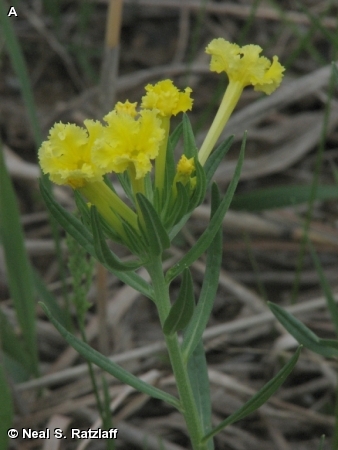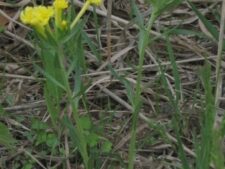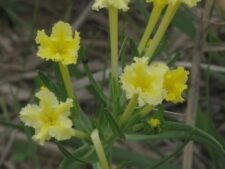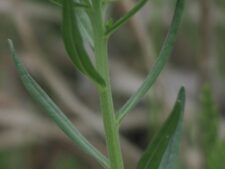
This native perennial is quite variable in size. Some single-stemmed plants may be as small as 4 inches while larger, multi-stemmed plants are up to 16 inches tall. Leaves are alternate, from 2-4 inches long, rather narrow and linear or lance-shaped (D). Tubular, lemon-yellow flowers arise in clusters from the axils of the upper leaves (A,B). Individual short-stalked flowers are 1/2″ long, the tube flaring at the tip into 5 conspicuously fringed petal-like lobes (C). Late in the season inconspicuous flowers that never open, but do produce seed, develop in the lower leaf axils.
Fringed Puccoon occurs in dry prairies and open woods. It is rare at Neale Woods where a single flowering plant was found in Knull Prairie restoration in the spring of 2009. It has not been seen since. Flowering occurs from April to June.
Fringed Puccoon produces shiny, white nutlets which are very hard and are responsible for the genus name Lithospermum, derived from the Greek words litho (stone) and sperm (seed).
Other common names include Narrow-leaved Puccoon and Narrow-leaved Gromwell.
The distinctive long, tubular, bright yellow flower with delicately fringed lobes distinguishes this species from closely related Hoary (Lithospermum canescens) and Hairy Puccoon (Lithospermum caroliniense).
The content of NatureSearch is provided by dedicated volunteer Naturalists of Fontenelle Forest who strive to provide the most accurate information available. Contributors of the images retain their copyrights. The point of contact for this page is: Neal Ratzlaff.

 Identification
Identification

